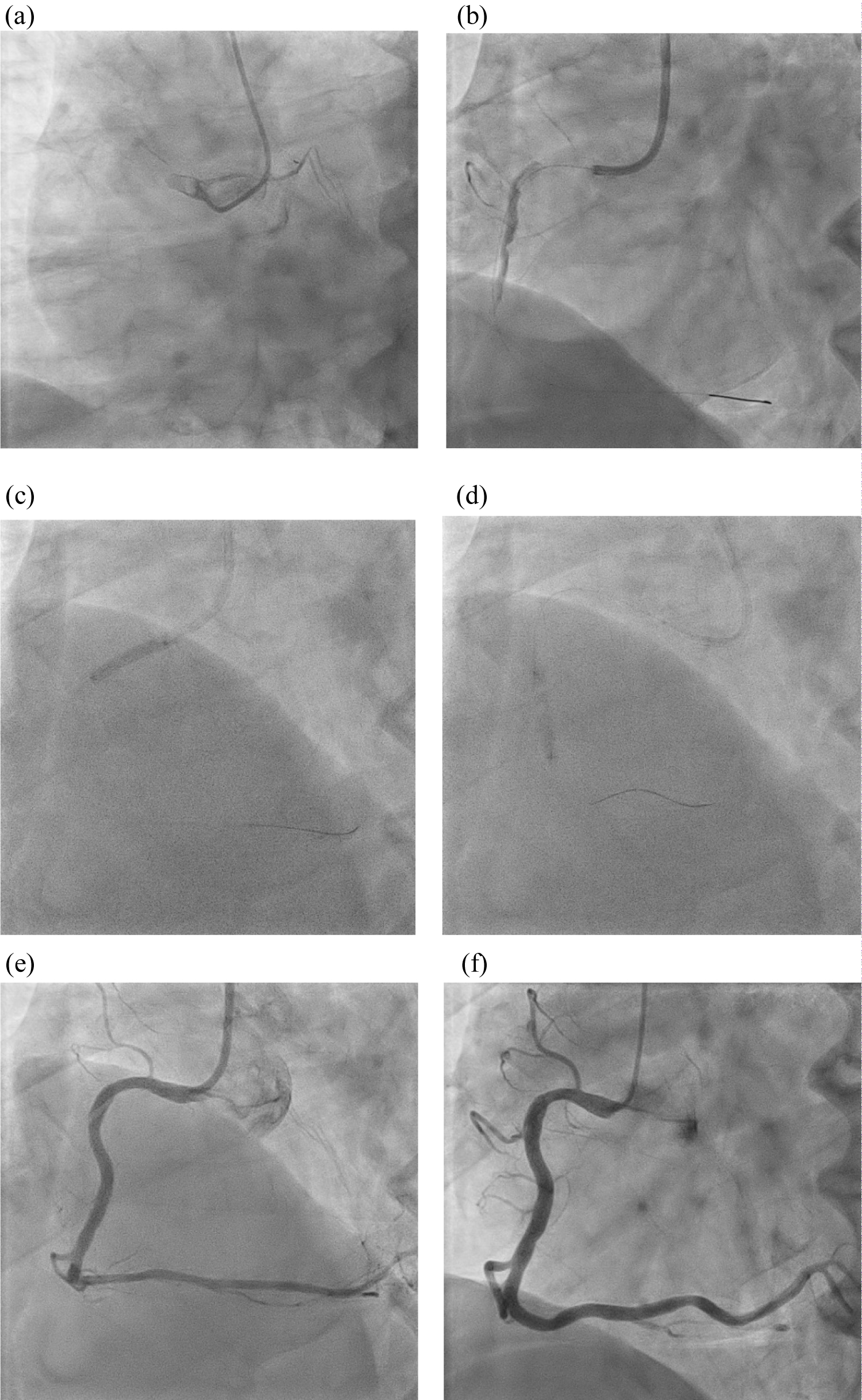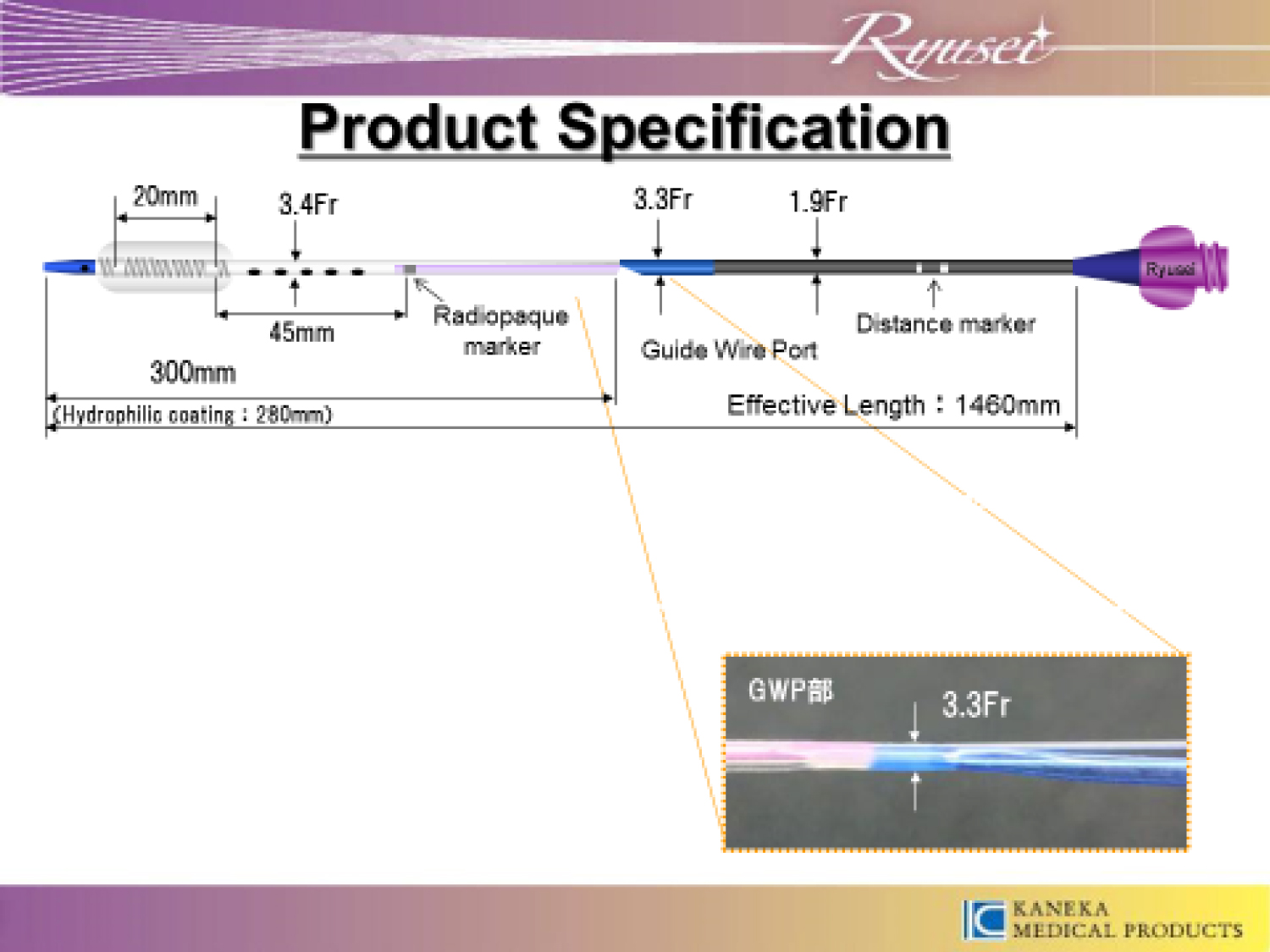The beneficial effect of percutaneous coronary intervention (PCI) in patients with acute coronary syndrome (ACS) has been well established. PCI for ACS, especially for thrombotic lesions, is difficult to treat due to distal embolization or residual thrombus. We experienced a case in which long balloon inflation was effective in PCI for ACS due to thrombotic lesions.
Here we introduce the case that long inflation balloon angioplasty using a perfusion balloon was useful in PCI for thrombus lesion.
Long inflation balloon angioplasty, Perfusion balloon, Acute coronary syndrome, Thrombus lesion
The beneficial effect of PCI in patients with ACS has been well established. However, distal embolization is sometimes observed during PCI for thrombus lesion. Thrombus aspiration therapy may be useful in PCI for thrombotic lesions. However, feasible alternative methods are limited when thrombus aspiration therapy failed. There is a need for treatment options to for thrombotic lesions for which thrombus aspiration therapy has failed. We introduce the case that long inflation balloon angioplasty using a perfusion balloon was useful in PCI for thrombus lesion.
Intracoronary thrombus followed by a rupture of unstable vulnerable plaque is well known cause of ACS. The beneficial effect of PCI in patients with ACS has been well established. However, distal embolization is sometimes observed during PCI for thrombus lesion [1]. No reflow phenomenon is caused by the distal embolization. No reflow phenomenon is closely related to the clinical outcome of patients, and is one of the leading causes of death after PCI [2].
Thrombus aspiration therapy and distal protection device may be useful in PCI for thrombotic lesions. In Japan, thrombus aspiration therapy is routinely performed for ACS due to thrombotic lesions. However, there is little evidence in previous studies that these treatments are useful [3,4]. We introduce the usefulness of long inflation balloon angioplasty using a perfusion balloon (Ryusei, Kaneka, Japan) for thrombus lesion to prevent the distal embolization.
A 68-year-old male was admitted to our hospital with severe chest pain. Electrocardiography on arrival showed ST-segment elevation in leads II, III, and aVF. He was diagnosed with inferior ST-segment elevation myocardial infarction (STEMI).
Emergent coronary angiogram (CAG) was performed. CAG indicated total thrombotic occlusion at the proximal RCA and no organic stenosis in the left coronary arteries (Figure 1a). Primary PCI was performed under the diagnosis of inferior STEMI.
The 6F JR 4 (TAIGA, Medtronic, USA) was engaged to the RCA from the radial artery and guidewire (RunthroughNS, Terumo, Japan) was passed. Angiography showed thrombotic lesions. So, thrombectomy was attempted several times using an aspiration catheter (Rebirth Pro2, Medtronic, USA). A red thrombus was aspirated from proximal RCA.
Subsequent angiogram indicated severe stenosis in the proximal RCA and occlusion in the middle RCA with massive thrombus (Figure 1b). It was considered that balloon expansion and stent placement for thrombotic lesions may cause no-reflow.
We performed long inflation for 5 minutes each in the proximal and the mid RCA by the perfusion balloon (Ryusei 3.5 mm Kaneka, Japan) (Figure 1c and Figure 1d).
Subsequent angiogram indicated an improvement in stenosis and good distal flow without slow flow (Figure 1e). The procedure was completed without stenting.
In the early postoperative period, the ST elevation on the electrocardiogram also improved and the LV wall motion also improved.
Follow up CAG 8 days after initial PCI indicated no restenosis and TIMI flow Grade III (Figure 1f).
 Figure 1: a) CAG indicated total thrombotic occlusion at the proximal RCA; b) CAG after thrombectomy indicated severe stenosis in the proximal RCA and occlusion in the middle RCA with massive thrombus; c&d) Long inflation for 5 minutes each in the proximal and the mid RCA by the perfusion balloon; e) Final angiogram indicated no stenosis; f) Follw up CAG 8 days after initial PCI.
View Figure 1
Figure 1: a) CAG indicated total thrombotic occlusion at the proximal RCA; b) CAG after thrombectomy indicated severe stenosis in the proximal RCA and occlusion in the middle RCA with massive thrombus; c&d) Long inflation for 5 minutes each in the proximal and the mid RCA by the perfusion balloon; e) Final angiogram indicated no stenosis; f) Follw up CAG 8 days after initial PCI.
View Figure 1
Thrombotic lesions are difficult to treat due to distal emboli or residual thrombus. Distal embolization is a cause of no-reflow phenomenon. Thrombus aspiration therapy may be useful in PCI for thrombotic lesions. However, feasible alternative methods are limited when thrombus aspiration therapy failed.
Long inflation balloon angioplasty using a perfusion balloon was thought to be able to treat thrombotic lesions without causing distal emboli by holding the thrombus into the coronary artery wall (Figure 2). We performed long inflation using perfusion balloon for 6 cases of ACS lesions mainly caused by thrombus from January to December, 2019. In all 6 cases, CAG after long inflation indicated an improvement in stenosis and good distal flow without slow flow. All 6 cases were treated without stents. We thought that long balloon inflation technique is most effective for patients with massive thrombus and small plaque volume.
 Figure 2: Perfusion balloon (Ryusei. Kaneka, Japan). The instrument has 16 proximal perfusion holes (φ300 μm) and 8 distal perfusion holes (φ300 μm), which allows the blood flow from the distal to proximal balloon segment. This figure is presented by the Kaneka Medix Corporation.
View Figure 2
Figure 2: Perfusion balloon (Ryusei. Kaneka, Japan). The instrument has 16 proximal perfusion holes (φ300 μm) and 8 distal perfusion holes (φ300 μm), which allows the blood flow from the distal to proximal balloon segment. This figure is presented by the Kaneka Medix Corporation.
View Figure 2
There are also some other treatment options for preventing distal embolization. Distal protection device is one of the treatment options to prevent distal embolization. In this case, Coronary flow after thrombectomy was TIMI0, so, it was difficult to use the distal protection device.
Some studies have shown that Glycoprotein IIb/IIIa inhibitors reduce the incidence of no-reflow [5]. However, it cannot be used in Japan.
We set the inflation time of the long balloon inflation technique to 5 minutes. There is no scientific basis for setting the balloon inflation time to 5 minutes. In our case, we were able to perform PCI by long balloon inflation for 5 minutes without any significant thrombus remaining. More research is needed to determine the optimal extension time.
This is a case series, and all procedures were performed by a single operator. Further research is needed.
Long inflation balloon angioplasty using a perfusion balloon is a useful technique in thrombus lesion to prevent distal embolization.
The authors declare that there is no conflict of interest.
The article conformed to the ethical guidelines of the 1975 Declaration of Helsinki. The article protocol was approved by the local Institutional Committee on Human Research at our institution.
The sponsor had no control over the interpretation, writing, or publication of this work.